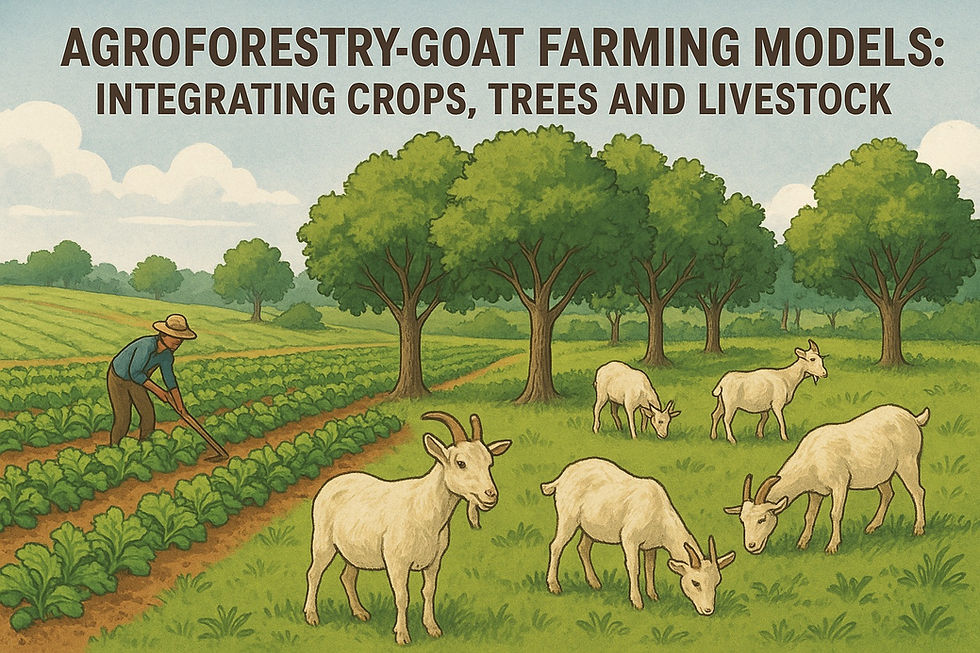Leveraging Goat Farming for Climate Resilience
- Global Services TGT
- Dec 11, 2024
- 2 min read

Building resilience in vulnerable communities is imperative in the face of escalating climate change impacts. Climate change poses significant challenges to agricultural systems worldwide, jeopardizing food security and livelihoods, particularly in rural areas. Extreme weather events, shifting precipitation patterns, and rising temperatures are altering landscapes and challenging traditional farming practices.
Role of Goat in Climate Resilience
Goats exhibit remarkable resilience to environmental stressors, making them an ideal livestock species for climate-affected regions. Their adaptability to diverse climatic conditions, dietary flexibility, water efficiency, and small ecological footprint position them as valuable assets in building resilient communities.
When it comes to climate resilience, #goats are surprisingly adept animals. Here's why:
Adaptability: Goats are known for their adaptability to harsh environments. They can thrive in a variety of climates, from hot and arid regions to cold and mountainous areas. This adaptability makes them well-suited to withstand changes in weather patterns due to climate change.
Small Size and Mobility: Unlike larger livestock species like cattle, goats have a smaller ecological footprint and can be raised in smaller spaces. This makes them suitable for smallholder farmers or those with limited land resources, who may be more vulnerable to the impacts of climate change.
Hardiness: Goats are generally hardy animals, resistant to diseases and parasites that can thrive in certain climates. Their ruggedness and ability to withstand challenging conditions make them resilient in the face of climate-related health risks.
Dietary Flexibility: Goats are browsers, meaning they can consume a wide range of vegetation, including many plants that other livestock species might not eat. This dietary flexibility allows them to find food even in areas where vegetation is sparse due to drought or other climate-related factors.
Water Efficiency: Compared to some other livestock, goats require less water to thrive. They can survive on lower-quality water sources, such as brackish water, which may become more common in areas experiencing drought or saltwater intrusion due to sea level rise.
Income Diversification: For many rural communities, goats serve as an important source of income and livelihood diversification. In regions where traditional livelihoods are threatened by climate change, goats can provide a resilient source of income through the sale of meat, milk, and other products.
While goats possess several characteristics that contribute to their climate resilience, it's important to note that they are not immune to the impacts of climate change. Extreme weather events, shifts in vegetation patterns, and changes in water availability can still pose challenges to goat farming. However, their adaptability and resilience make them valuable assets for many communities facing the uncertainties of a changing climate.
Leveraging goat farming for climate resilience presents a holistic approach to addressing the multifaceted challenges posed by climate change while promoting sustainable livelihoods and ecosystem stewardship. By investing in goat farming initiatives, we can empower communities to thrive in a changing climate while safeguarding the natural resources on which their resilience depends.


Comments